
Wednesday, 31 December 2008
A teapot and a visit to the Louvre

Monday, 29 December 2008
Educational resource on modern art from the Centre Pompidou
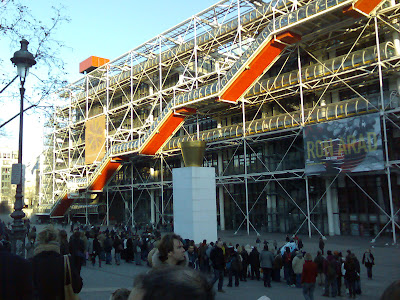
These educational art files have been put together to help art amateurs prepare for their visit. They contain reproductions of works by artists in the collection as well as some biographical and historical information. These files are worth reading and provide a good introduction to key modern artists.
Here is the list of 13 files available in English (they are also available in French):
- Henri Matisse
- Pablo Picasso
- Marcel Duchamp
- Christian Boltanski
- Surrealist art
- New realism
- Cubism
- Richard Rogers + Architects
- The Object in the 20th-Century Art
- Los angeles - 1955 - 1985, The birth of an art capital
- Robert Rauschenberg, Combines (1953-1964)
- Yves Klein. Body, colour, immaterial
- Vassily Kandinsky
Art history Modern Art Centre Pompidou Henri Matisse Pablo Picasso Marcel Duchamp Christian Boltanski Surrealist art New realism Cubism Richard Rogers Robert Rauschenberg Yves Klein Vassily Kandinsky
Wednesday, 24 December 2008
A Parisian breakfast and a visit to Versailles
Parisian breakfast - oil on panel (6" x 8") by Benoit Philippe


Sunday, 21 December 2008
Texture in oil with painting knives
When painting the oil on canvas Chrysanthemums and apples, I used painting knives for both the background and the flower petals. In this post, I will give you more details on the techniques and material used.
Painting the background
I changed the colour and aspect of the background many times for this painting, finally choosing a cool neutral background to make the warm colours of the composition resonate.

To build the foundation, I used a square shaped painting knife. Both the end and the side of the knife create interesting effects. By varying the pressure and the angle the edge of the knife makes with the canvas, you leave more of less paint on the canvas. I also scraped some painting to reveal the original background. I like the contrast you get between heavy sleek applications and the rough texture of the canvas.

If overused, painting knives can give your painting a cheap look. I think this is because you may end end-up with a mosaic of bright pure colours. On the other hand, there is nothing like a painting knife to build texture and give your painting a sculptural feel.

One way to get both texture and subtle colour variation is to glaze over the texture created with painting knives. This way, you re-introduce nuances in tones and colours while keeping the benefit of a strong texture.
Glazing over pure colours also achieves another goal: beautiful transparent and luminous colours.
The process takes time because you need to let your work with the painting knife dry before you can glaze over it. You can speed-up drying time if you mix your paint with Alkyd impasto medium or gel.
I used a technique that decorators are familiar with: On a light textured background, I laid some dark transparent colours mixed with painting medium. Then, I rubbed off the paint with a rag, leaving the glaze in the pits of the textured under painting. By doing this repeatedly with different shades of dark colours, I obtain an interesting background. If you leave the glaze to dry a little bit, then more of the colour stays on the background. The same technique can be employed to weather old wood of building walls in landscape paintings.

Painting the flower petals
For the impasto on the flowers, I mixed the paint with Lefranc & Bourgeois Flemish Medium paste (clear) in tube. It is composed of mastic resin, linseed oil, Aspic spirit and cobalt-zirconium siccative. It takes quickly (2 hours) and becomes hard when dry. It is glossy and transparent and allows precise and profound brush strokes.
A thin rounded knife is ideal to paint flower petals. Note how the shape of the knife blade actually mimics the shape of the petals.
For maximum effect, the thick application of pure light colour is laid on top of the thin darker under painting (see
I have reposted the photograph of the Chrysanthemums and apples painting in a larger format, so you can see the details of the brushwork and texture created with the painting knives. To see the larger photograph, just click on the photograph in the post and the larger version will open in a new window.
Related articles
Thick lights over thin darks
Paint fat over lean – oil technique
Tuesday, 16 December 2008
Even Matisse struggled at times
This article was first published in my newsletter "Notes From My French Easel" – October 2008.
In a poignant, yet interesting letter to his friend the painter Pierre Bonnard, Henri Matisse expressed his frustration on the path to finding a new way of painting. This letter is dated 13 January 1940, during the war. Matisse describes how he feels paralyzed and cannot find a good way to express himself in his painting, as he has with his drawing (« My drawing and my painting are parting »).

At this time in his career, Matisse was exploring painting with flat planes of colours and found it hindered the spontaneity he had found in his fluid drawing technique: « But my painting is constraint by new conventions of flat planes by which I have to express myself entirely, of local tones exclusively without shadows, without relief, that have to react one with another in order to suggest light, a spiritual space. »
Paintings from this period now seem evident to us because we are accustomed to see them in museums and art books, but Matisse was exploring new avenues and paving the way to abstract painters. He was trying to transpose what he had found in drawing into his painting, but he was conscious at the same time that this new venture was not easy : « I found a way to draw which, after some preliminary work, has a spontaneity that release me entirely from what I am feeling, but this mean is exclusively for me, artist and spectator. But a colourist’s drawing is not a painting. One should find some equivalence with colours. This is what I fail to do. »
Matisse’s quest would come to an end when he produced his gouache-painted cut-outs, a medium where he could reconcile drawing with colour in a perfect balance.
Related articles
The Art of Ordinary
Pierre Bonnard Henri Matisse Art history Art technique Drawing Painting
Friday, 12 December 2008
Morning break

Morning break - Oil on panel (6" x 8") by Benoit Philippe
Monday, 8 December 2008
10 Reasons to keep an inventory of your art works (Part 2)

What information goes into your inventory?
How much information you put in your inventory is up to you. My rule of thumb is: the more, the better.
- A reference number: not mandatory, but may be convenient if, for instance, you what to link the entry to a separate library of photographs of your
- Title of the work
- Dimensions of the work. I may indicate the dimensions in inches or centimetres or both (it depends whether I buy the support in France or in England).
- Date of completion. Personally, I use the month and the year and, if the work has been created over a long period of time, I would register it at the end with the indication of both the starting month and the end month.
- Medium: watercolour, oil painting, graphite, etc.
- Support: canvas, board, watercolour paper… Personally, I indicate the details of the support used in the comment section. This is important as, if I like the effect I can achieve with a particular paper, I want to know exactly what sort and brand it is. Same thing for a canvas I am using for oil painting. A typical example would be: “Winsor & Newton Artists’ Quality Stretched Cotton Canvas – Triple coated Acid free sizing” (I make sure I keep the label of the canvas until I transfer the information into the inventory)
- Material used. This is important in particular if you use unusual material or techniques. But even if you use traditional technique, some information may be useful if the work needs restoration of repair (for instance the type of varnish you use on your oil painting)
- Price (if the work is for sale): I indicate is the price is for the work with or without the frame.
- Costs information: I try to track the cost of material, such as canvasses and frames. This helps when you set-up the price of your work.
- Information on the subject of the painting. Are you going to remember the exact name of that place you painted five years ago if it is not in the title of the work?
- Details on the creation of the work: If I write a blog entry on a particular work, I would cut & paste the text in the “comments” section.
- Exhibitions where the work has been show.
- Juried exhibition where the work has been submitted (even if it has been refused)
- Publication record. Has the work been featured in the press or in a book?
- “SOLD”… with the date when it has been sold.
- Name of the collector who purchased the work, as well as her or his details
Tools for your inventory
If you are low-tech, pen and paper work well. Just prepare a table with as many columns as necessary for the information you want to capture and photocopy your template.
On a computer, you can use a simple spreadsheet (like Microsoft Excel) or a table in a Word document (use the landscape format) to keep your inventory. The key is to keep your inventory up-to-date as you go. I learnt the hard way that trying the re-create the information several years after the facts is almost impossible.
You can also invest in a professional solution. A number of vendors propose some software that helps you to keep your inventory, but also to generate price lists, catalogues and even manage your mailing list. See Related articles below for more information on existing artist software solutions.
Some practical considerations
If you keep your inventory on your computer:
- Print it from time to time, just in case
- Always back-up you information (on a disk or on another computer, of both)
- Print a couple of blank tables where you can write down the information when you have it. At the end of the month, you can transcribe your notes into your electronic document. Batching in this way will save you time and you won’t have to switch your computer on to update one piece of information in your inventory.
Related articles
Updated database software for artists by Alyson Stanfield from Art Biz Blog
Template for inventory record
Friday, 5 December 2008
10 Reasons to keep an inventory of your art works (Part 1)

Why should you keep an inventory?
1. Measure your output and keep track of your goals. The best way to progress is to paint on a regular basis, everyday if you can. Seeing how many work you’ve already produced will give you a boost of energy.
2. Keep key information in one place (see “What information goes into your inventory” in Part 2 of this article)
3. Make your life easier. When did I finished this oil painting – Is it dry enough to be varnished? If you keep track of completion dates in your inventory, it will take you only seconds to answer these questions.
4. Get ready for the gallery. Could you answer questions like: how many works do you produce each year? How many paintings have you sold? What was the most expensive painting you’ve sold?
5. Know where your work is (In the studio /exhibition / consignment / loan / work sold)
6. Know where your work has been exhibited. Enter the details of all the places where the work has been shown.
7. Build a personal history file for each painting. You can document the circumstances around the creation of a particular work, the history of the place, the reason why you painted it. I have a comment section in my table where I can record miscellaneous information on a particular piece of work (for instance, if it was inspired by the work of another artist). I have a comment section in my inventory table where I can record miscellaneous information on a particular piece of work (for instance, if it was inspired by the work of another artist). Having this information will help you when you prepare for an exhibition or when you discuss a particular work with a potential buyer. Buyers love stories and having one at your finger tip (or ready in your mind, since you recorded it in your inventory) will remove the stress of having to find on the spot something interesting to talk about.
8. Keep track of your evolution: With each new work, you grow and evolve as an artist. Over the years, your work will take different direction, you will explore new avenues. It is therefore important to be able to retrace the path you took and see which painting came first.
9. Particular notes on material and painting techniques used. May be you tried something new or a particular work is the beginning of a new path in your artistic quest. In both instances, you want to be able to go back to your records and find out about this.
10. Curators will thank you. If your work gets to a museum curator, they will thank you if you can provide the information you collected in your inventory. See what Picasso had to say on dating and numbering his work:
«I never do a painting like a work of art. It is always a search. I am always seeking and there is a logical connection throughout that search. This is why I number them. I number and date them.
May be one day someone will thank me for it. »
(Picasso – in Alexander Liberman, Extract from « Picasso » in Vogue, New York, 1956)
Art inventory Art marketing Painting Art sale Art exhibition Art template Database software for artists
Wednesday, 3 December 2008
Tidying up art – a TED Talk by Ursus Wehrli
I don’t want to spoil the surprise for you. Just let me say that it is a hilarious take on modern art and art in general. Very Swiss.
If you have troubles with the embedded video, please visit the TED website.
Related resources
Books by Ursus Wehrli:
Tidying Up Art
More Tidying Up Art
Humour in art Ursus Wehrli Tidying up art TED Talk TED Conference
Monday, 1 December 2008
Creativity under constraint
This article was first published in my newsletter "Notes From My French Easel" – September 2008. Follow the link to subscribe to the newsletter .
Jean-Jacques Rousseau, the French philosopher, said that “Obedience to the law that we prescribe to ourselves is freedom” (“L’obéissance à la loi qu’on s’est prescrite est liberté.”). This statement was made in a social and political context, but it applies equally to an individual artist.
Creativity and innovation thrive on constraint. An artist does not create outside constraints but transcends them.
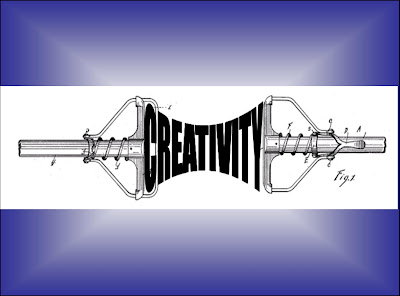
At an initial stage, the artist assimilates the rules of his craft and art. He discovers the material he his using and the rules of good conservation. He learns, work after work, to get the best out of the material and how he can use particular effects to shape his artisitc vision. He studies the masters and learns from other artists.
After mastering the rules, the time comes to break them and see what happens. This is the wonderful journey of discovery.
Finally, the artist recreates the rules, he writes new poetry out of old words. He makes the craft look effortless, he creates his own constraints to stretch his artistic boundaries and express himself. It is like a game of constant renewal, while still being trully personal and particular.
The truth is that limitations encourage creativity. The mind needs focus to excel. Give your mind a centre of attention and it will respond. Leave him into the wild and it will wander with no aim and no result.
How can you get your mind to react creatively:
1. Paint or draw something you never painted before.
2. Chose an unusual format to work with (a square canvas or a very long one for instance).
3. Paint with only three colours.
4. Remove from your palette your favourite colour.
5. Try a new medium.
6. Listen to a piece of music and paint what it reminds you of.
7. Make a drawing or a painting of a childwood memory.
8. Paint a canvas with only one big brush.
9. Take a small canvas, set a timer to 60 minutes, and aim to complete the painting within that time.
10. To find new painting topics, take a piece of paper, write the numbers 1 to 10 vertically on the left side, followed by the words “I will paint…” and complete each sentence. Your mind crave for completion and this will force your brain to come-up with answers (this is the technique I used to draft this list of ten items).
Related articles
Creativity Creative exercise
Friday, 28 November 2008
Phidias, El Greco and road markings
In the golden age of Athens, a contest had been organized to create a statue to the glory of Athena. The statue of the deity was to be erected on top of a column. Two sculptors, Alkamenes and Phidias, entered the contest. When both statues arrived, Alkamenes’ one was admired by the crowd. On the other hand, Phidias’ statue raised outrage: it seemed all wrong with its mouth wide open, a distended nostril and elongated limbs. But Phidias had the last laugh. When his statue was put on top of the column, it looked perfect, while the one by his rival seemed deformed. Phidias knew about optics and geometry and has taken into account the effect of perspective on an object placed high when he carved his statue.
Paintings by El Greco can be immediately identified by his slander figures. For a long time, I wondered about this. Then, it stroke me: the reason El Greco painted this way is that many of his paintings featured religious scenes and were to be hung in churches and cathedrals. I am sure you noticed that paintings in churches are generally hung high, the bottom of the frame being two or three metres off the ground. Like Phidias, El Greco took into account how his painting would look like from down below.
This is just guts feeling. I have not done extensive research on this and I don’t have any circumstantial evidence (like letters from the artist or testimonials from his time) to back-up this theory. It just feels right. It’s like one of these things that look evident while you have seen them.
Another disclaimer: I have not read extensively on El Greco yet, and may be this has been already explained by art scholars… If you know about particular studies pointing to this, I would be most interested to get the reference. Please leave a comment at the end of this post.
To illustrate the point, let’s take the example of the painting Adoration of the Shepherds , which was painted by El Greco for the altarpiece of his own tomb. The shepherds in the foreground look like elongated giants.
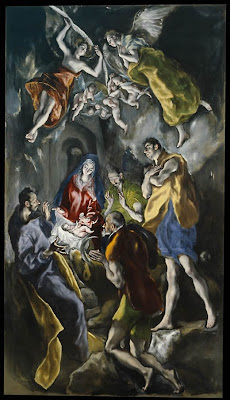
As a rudimental experiment, I printed this picture, placed it on a small easel and took a picture from below at an angle. The effect is exaggerated because of the small size of the reproduction and the steep angle of the camera, but it gives you an idea of what I am talking about.

The interesting thing about El Greco, it that this way of painting elongated figures transferred to his style and became one of his trademarks, even when the smaller size of the painting did not warrant the use of this perspective trick. You can see this on his portrait El caballero de la mano en el pecho.
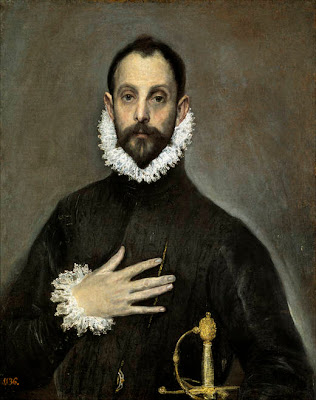
El caballero de la mano en el pecho. Oil on canvas. 81,8 x 65,8 cm. Museo del Prado. Madrid (Spain).
We talked about Phidias; we talked about El Greco; this leaves us with the road markings. They are a modern illustration of the same principle: road markings such as direction arrows or road numbers are painted in an elongated manner to take into account perspective and be visible to motorists.
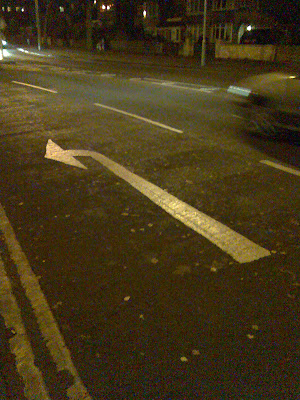
This brings us to the end of our journey.
Related resource
The Museo National del Prado in Madrid has several El Greco's paintings in the collection.
Phidias Alkamenes El Greco Perspective Art history Museo del Prado
Wednesday, 26 November 2008
Yosemite's snow - oil painting
During our trip to the US this year, we went in the Yosemite National Park for a few days. The beauty and the scale of nature are hard to describe.
We went on a walk to see the Giant Sequoia. I was pleased to find places where the snow was still there. I havested plenty of subjects with my digital camera.

In order to get luminous colours, I painted the white canvas with a coat of vermillion acrylic paint before starting.
Thursday, 20 November 2008
Happy Thanksgiving!
We don’t really celebrate Thanksgiving in Europe, but I know many of you are visiting this blog from the US, so I wanted to wish you all a Happy Thanksgiving.
As explained in Wikipedia, Thanksgiving is “an annual American Federal holiday to express thanks for one's material and spiritual possessions.” I am grateful for what I have: a lovely wife, a great family, good health, an interesting job, and time to paint.
I would like to take this occasion to thank the following artists that have a link from their blog to mine:
Susan lives with her family in California and paint with watercolours and draw with pencils and colour pencils. You can see her works on her blog Susan’s Scribbles
Purnima Palkar, an artist living in Switzerland, features some beautiful handcrafted products and paintings on her blog Chitra Karma . The designs are elegant and the bright colours will cheer you up. Check out Purnima art and craft for sale at Peazcreation on Etsy.
Carol Monosson, an artist from Israel behind two blogs: Carol - MyWork with some nice drawings and really interesting digital photos (I like the one with the fishes and the toirtoise) and Carol - connecting that she uses to stay in touch.
(Long) Post Scriptum
You may wonder how I found about this. I know thanks to a tip that Dan, who is managing EmptyEasel, gave in his article “An Off-site SEO Tip for Online Artists (Or, The Good Karma of Linking)”.
Yahoo has a tool called Site Explorer , which allows you to know who is linking to your site. It is simple:
- Go to Site Explorer,
- Enter the URL of your website at the top of the page and hit the “Explore URL” Button.
- Click on the “Inlinks” button to see the list of web pages linking to your site
- The links shown in the list are clickable and you can explore the pages
Yahoo Site Explorer Thanksgiving Susan’s Scribbles Chitra Karma EmptyEasel
Monday, 17 November 2008
Fruitful Sunday (oil paintings)


Three plums - Oil painting (6" x 8") by benoit Philippe
Wednesday, 12 November 2008
Don’t let them hang your works upside down
The Sunday Times (November 9, 2008) published an article titled "Tate gallery’s Rothkos are left in a twist
The works involved in this controversy are the Black on Maroon paintings by Rothko. The article explains:
“Curators of the blockbuster Rothko exhibition at Tate Modern in London have displayed two of the artist’s best known works on their side, contrary to Rothko’s original intentions.
The two paintings from the Black on Maroon series have been hung vertically with bold stripes running from top to bottom. However, Rothko said he wanted the works — which he donated to the Tate before committing suicide in February 1970 — to be hung with the stripes running horizontally. His signature on the back of the paintings is thought to reflect this wish. “
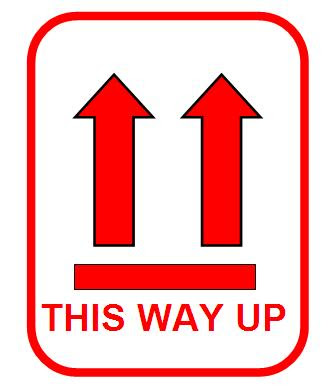
It’s not that Rothko did not care. The article mentions that Rothko discussed the matter with Norman Reid, who was director of the Tate, in 1970, when the paintings where first put on display. Furthermore, Reid sent Rothko a model of the gallery room in order to obtain his approval… So, in this case, you can’t blame the artist.
Tate modern has indicated that it would not be able to check Rothko’s signature on the back until the end of the exhibition. I understand it is rather embarrassing for the curator, in particular if the paintings have been reproduced this way in the exhibition catalogue (I have not checked, but I suppose it is the case).
Practically, if you paint abstract works or you think there could be any doubt on which way your painting should be hung, make sure that you indicate clearly which way you want your work to be hung:
- Your signature should give a good indication
- If you are signing on the back of the painting, this gives a good indication if you sign horizontally. If you sign vertically, your painting may be exhibited on its side (as the curator would think you signed the piece horizontally)
- The best way seems to me to be explicit and trace an arrow indicating the way up on one of the vertical stretchers.
Related resources
Rothko Exhibition
26 September 2008 to 1 February 2009
Tate Modern
Bankside
London SE1 9TG
020 7887 8888
Open Sunday – Thursday 10.00–18.00
Open Friday and Saturday 10.00–22.00
Rothko Art exhibition Sunday Times Tate Modern Artwork signature
Monday, 10 November 2008
Lightfastness matters
On my way to the new library that just opened in town centre, I passed a shop that closed a few months ago. As you will see on the photograph below, the sign on the door telling customers where the shop relocated has now faded and is barely legible.
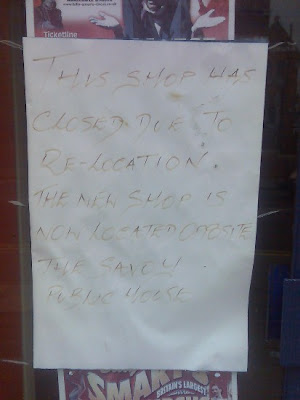
Does that matter? It does: if the shopkeeper had bothered writing his notice with lightfast felt pen or paint, he would still benefit from free advertising… until the premises are rented again (that can be in some times considering the current economic climate).
Just imagine the effect it would have on your buyers to discover that your paintings or drawings are fading away? Make sure you use artist material with a good lightfast index. Some media, like coloured pencils or felt pens are more likely to fade and it is even more important to double check that the ones you use are lightfast.
The same goes for prints, if you have any made from your original artworks…
Friday, 7 November 2008
Three birch trees - Oil painting

Wednesday, 5 November 2008
Using masking fluid in watercolour
This article was first published in "Frequency Magazine" – November 2008.
In traditional watercolour, you paint on white paper and you save areas to serve as white areas in your paintings. This is where masking fluid helps. Masking fluid is made of liquid latex in ammonia. It forms a temporary water proof seal so that you can paint onto the paper and it will reserve the area it covers. It is generally tinted yellow or grey to make it easier to see on your white paper.
Areas protected by masking fluid will accept watercolour after the masking fluid has been removed. If the mark appears too white, you can always soften it with a wash of colour.
Masking fluid can be applied on white paper but also on a wash in order to reserve an area before you apply a subsequent wash. The main advantage of masking fluid is that you can paint uninterrupted washes without having to worry about “leaving the whites”.
It is recommended to carry out a test on the back of your paper to check that the masking fluid will come off easily. It works on most watercolour papers. The only time I had trouble with it was when I used an artisanal handmade paper. The masking fluid would not come off or would tear the paper away.
Before you start, shake the bottle of masking fluid a couple of times (after you made sure it is well sealed). This way, latex and ammonia will be well mixed together. Fluidity depends on the brand you use, but note that you can water down masking fluid in case you want to achieve certain effects that require more fluidity (like splattering).
You can use all sorts of instruments to apply masking fluid: a dip pen or a ruling pen for fine lines, an old bristle brush for looser marks or a colour shaper. You can also splatter some masking fluid onto your paper using an old toothbrush. Personally, I like to use a colour shaper with an angle chisel tip. This particular shape (rounded on one side and with a straight angle on the other side) allows for a variety of marks. The other advantage of this tool is that masking fluid comes off easily from the silicon tip.
Never use your best sable brush to apply masking fluid. Latex, once dry, is almost impossible to remove from the hair and your brush will be ruined. For the same reason, you should always make sure that the masking fluid is completely dry before you start painting over it. If you put masking fluid by accident on a good brush, remove it immediately with warm soapy water.
You should only apply masking fluid on dry paper and once you’ve applied the masking fluid, wait for it to dry. You can speed-up the drying process with a hairdryer. Masking fluid will change colour when dry. The grey one I am using at the moment takes a darker shade of grey when dry. In order to be sure it is really dry, I touch the thicker marks of masking fluid with the tip of my finger. It should not be tacky.
Another usual recommendation is to remove masking fluid as soon as possible. It may be hard to remove if you leave it for too long on your paper… in practice, it will depend on what brand you use for both your paper and masking fluid. Leaving the masking fluid on the paper for a few days should be fine, but try this first on a paper sample.
Ensure your painting is completely dry before you try to remove masking fluid or your paper will be ripped. To remove the masking fluid, rub gently the surface of the paper with your fingers or a rubber. If you use your fingers, wash your hands just before so that you won’t leave grease on the surface of the paper. Another effective way to remove masking fluid is to form a little ball of it when you clear a large area and then use this ball of latex as an improvised eraser.
In case you made a mistake, just wait for the masking fluid to dry, rub it gently and start again.
Regarding masking fluid storage: Keep the bottle upright and tightly capped. Put the bottle in a re-sealable plastic bag before you store it in your watercolour bag. Spillage may happen and dry latex won’t come off fabric for instance.
La Peniche - Watercolour by Benoit Philippe - I used masking fluid to reserve the light areas on the boat as well as the sunny areas on the path and in the bushes.
With masking fluid, you are only limited by your own imagination and you will soon find ways to use masking fluid to your advantage. This is a “must have” tool in the watercolourist’s tool box. Here are some examples of uses to get you started:
- Grass blades and flowers in a field
- Door frames and window frames
- Fence posts in a distant field
- Highlights in the eyes and hair for a portrait
- Sand on the beach or granulated texture of concrete (by splattering masking fluid with a toothbrush)
Watercolour Watercolor Painting technique Masking fluid Trinket Masking gum
Monday, 3 November 2008
Jackdawing for ideas
This is how Rob Bevan and Tim Wright describe “Jackdawing” in their book “Unleash Your Creativity: Secrets of Creative Genius (52 Brilliant Ideas)
“One easy way to engage in this process of constant research is to keep a camera handy (preferably digital) and take photos of everything that catches you eyes. Another is to squirrel away little bits of information (and intriguing bits of rubbish!) as you find them, building up a personal collection of seemingly useless and unrelated factoids, newspaper cuttings, URL, bookmarks, postcards, brochures, food packaging… anything that catches your eyes. This process is sometimes referred to as “jackdawing”.
The authors also warn you against being carried away and getting submerged by your findings. The image of Bacon’s studio in his Kensington mews house comes to my mind…

In "Memoirs of the Life of John Constable: Composed Chiefly of His Letters (Arts & Letters)
“On going into his room one morning, not aware that he had yet been out of it, I found him setting some of these sketches with isinglass. His dressing-table was covered with flowers, feathers of birds, and pieces of bark with lichens and mosses adhering to them, which he had brought home for the sake of their beautiful tints. Mr. George Constable told me that while on the visit to him, Constable brought from Fittleworth Common at least a dozen different specimens of sand and earth, of colours from pale to deep yellow, and of light reddish hues to tints almost crimson. The richness of these colours contrasted with the deep greens of the furze and other vegetation on this picturesque heath delighted him exceedingly, and he carried these earths home carefully preserved in bottles, and also many fragments of the variously coloured stone.”
Henry Moore is another artist who used to bring back bits of nature in his studio. The Henry Moore Foundation (by the way, the Henry Moore Foundation web site is incredible and I could spend hours going through their collection and information) offers a panoramic view of Moore’s studio, which is fascinating. You can see a box of bones on the table and the commentary notes that the studio contained “bones, flints, roots, shells and other natural detritus” and that:
“Often Moore would apply plaster or plasticine on to a found object such as a flint or bone, or produce a plaster cast directly from the object itself. One example of this can be seen on the stand in the centre of the table. Notice the small plaster maquette with the bone beside it. This bone was the basis for Mother and Child: Hood 1983 (LH 851) in travertine marble, currently on loan from the Foundation to St Paul’s Cathedral, London.”
The drawing Artist's Hands Holding Bone 1981 (HMF 81(186) shows the artist’s fascination for bones. It is clear that the organic shape with rounded holes went into Moore’s sculptures. An example of this is the sculpture titled The Arch (1963-69). Another beautiful sculpture is Seated Woman: Thin Neck 1961 (LH 472) inspired by a breast bones of birds. Henry Moore’s words highlight how small natural objects can transform art:
“Since my student days I have liked the shape of bones, and have drawn them, studied them in the Natural History Museum, found them on sea-shores and saved them out of the stewpot... There are many structural, and sculptural principles to be learnt from bones, e.g. that in spite of their lightness they have great strength. Some bones, such as the breast bones of birds, have the lightweight fineness of a knife-blade.” (Henry Moore quoted in Philip James (ed.), Henry Moore on sculpture: A collection of the sculptor's writings and spoken words edited with an introduction by Philip James
Related articles and further reading
Fire-up your imagination
Books
- Memoirs of the Life of John Constable: Composed Chiefly of His Letters (Arts & Letters)
- Henry Moore on sculpture: A collection of the sculptor's writings and spoken words edited with an introduction by Philip James
- Unleash Your Creativity: Secrets of Creative Genius (52 Brilliant Ideas)
Rob Bevan Tim Wright Jackdawing Unleash your creativity John Constable Henry Moore Henry Moore Foundation Sculpture Art quotes








